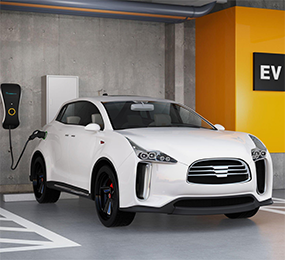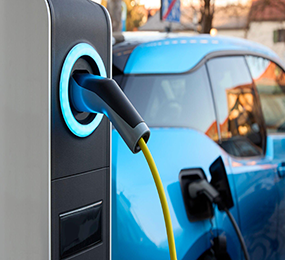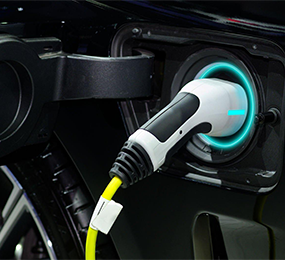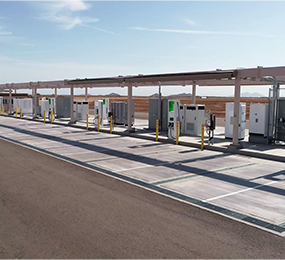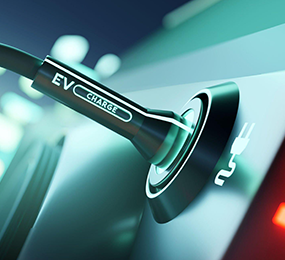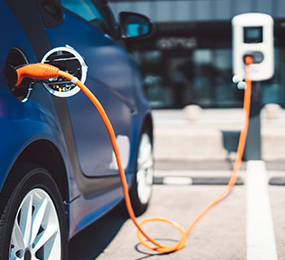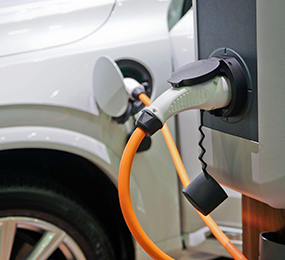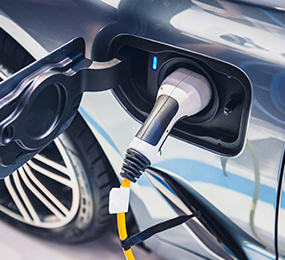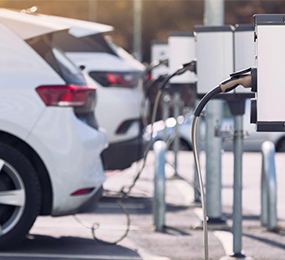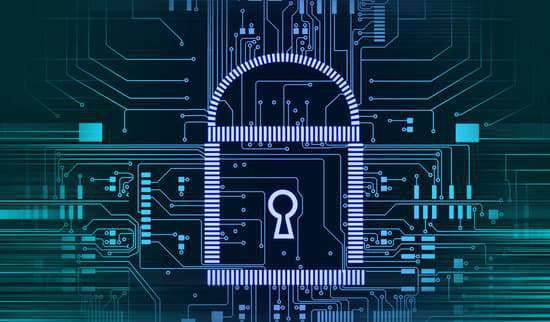Smart Charging Technologies and Applications
Intelligent EV charging stations
Smart charging devices are compatible with all electric vehicles, however not all charging devices are smart. Smartness is a buzzword, but a smart gadget must have certain features in order to be completely applicable with all of the future-proof feature possibilities that smart charging provides.
Consider the following three factors while choosing a charging device:
1. Check that the stations can connect to the cloud. In order to communicate with the service, devices should possess features such as GPRS or 3G connectivity.
2. Devices should have a standardized socket type, such as Type 2 or, in the event of a rapid charging device, CHAdeMO and CCS Combo.
3. The devices must be compatible with the backend of your choice. The most common and widely used standard protocol is OCPP, or Open Charge Point Protocol, which allows you to mix and match different software and hardware to create a comprehensive charging experience.
The more recent the standard version, the better, but the most important element is that the selected device and platform adhere to the same standard version.
Smart EV charging options
While smart devices are required for smart EV charging, the real hero of the story is the EV charging platform's smart features.
The administrative panel
If you have many charging stations in different places, the admin panel is your best buddy. This is where you can set the pricing for public charging, remotely control your stations, and monitor and download use statistics.
The admin panel includes tools to help you learn about your station statistics and make changes to the features, station details, and prices based on key metrics. In the admin panel, you can manage information about your customers, registrations, and RFID tag shipments as the charging network operator.
In summary, it allows you to participate actively in station administration, yet everything operates properly without your active participation.
Billing and automatic payments
Another benefit of investing in smart charging is the ability to set up automatic payments and invoices. Instead of manually billing your clients or workers following charging events, the platform does it for you. What's more, the finest part? Your consumers are allowed to pay in whatever way they see fit. From RFID tags to a mobile app to one-time payments made with a credit card, all you have to do is sit back and relax as the money comes in.
End-user mobile and web applications
End-user mobile and web apps elevate your consumer experience to new heights. They enable drivers to locate and reserve available charging stations, add preferred stations, examine their charge history, and much more. Because of its intelligence, the smartphone application displays real-time data regarding charging stations to EV drivers. The smartphone application contains all of the charging information that EV drivers want.
Roaming
Roaming allows charging station operators to attract more customers and increase their revenue. Roaming allows EV drivers to charge at tens of thousands of stations in a variety of methods, including through third-party software or cards. Roaming enhances the user experience and works similarly to mobile data roaming. Because the gadgets must be connected to roaming networks, intelligence is required.
Load management that is dynamic
Dynamic load management (or DLM) is such an important concept in smart EV charging that it is frequently used interchangeably with all smart features. In actuality, dynamic load management refers to the ability of a smart charging platform to intelligently allocate available power between the building and the electric cars being charged at the same time. In other words, DLM helps you preserve the local grid from peak demands while sparing you the trouble of upgrading the building's energy infrastructure.
Features for energy management
Energy management functions are critical in connecting EVs to the grid. Electric cars cannot be utilized to assist the electrical system until smart charging stations are installed. Watch this video to learn about the electric car's relationship with the energy grid.
Smart Charging Technologies and Applications
Intelligent EV charging stations
Smart charging devices are compatible with all electric vehicles, however not all charging devices are smart. Smartness is a buzzword, but a smart gadget must have certain features in order to be completely applicable with all of the future-proof feature possibilities that smart charging provides.
Consider the following three factors while choosing a charging device:
1. Check that the stations can connect to the cloud. In order to communicate with the service, devices should possess features such as GPRS or 3G connectivity.
2. Devices should have a standardized socket type, such as Type 2 or, in the event of a rapid charging device, CHAdeMO and CCS Combo.
3. The devices must be compatible with the backend of your choice. The most common and widely used standard protocol is OCPP, or Open Charge Point Protocol, which allows you to mix and match different software and hardware to create a comprehensive charging experience.
The more recent the standard version, the better, but the most important element is that the selected device and platform adhere to the same standard version.
Smart EV charging options
While smart devices are required for smart EV charging, the real hero of the story is the EV charging platform's smart features.
The administrative panel
If you have many charging stations in different places, the admin panel is your best buddy. This is where you can set the pricing for public charging, remotely control your stations, and monitor and download use statistics.
The admin panel includes tools to help you learn about your station statistics and make changes to the features, station details, and prices based on key metrics. In the admin panel, you can manage information about your customers, registrations, and RFID tag shipments as the charging network operator.
In summary, it allows you to participate actively in station administration, yet everything operates properly without your active participation.
Billing and automatic payments
Another benefit of investing in smart charging is the ability to set up automatic payments and invoices. Instead of manually billing your clients or workers following charging events, the platform does it for you. What's more, the finest part? Your consumers are allowed to pay in whatever way they see fit. From RFID tags to a mobile app to one-time payments made with a credit card, all you have to do is sit back and relax as the money comes in.
End-user mobile and web applications
End-user mobile and web apps elevate your consumer experience to new heights. They enable drivers to locate and reserve available charging stations, add preferred stations, examine their charge history, and much more. Because of its intelligence, the smartphone application displays real-time data regarding charging stations to EV drivers. The smartphone application contains all of the charging information that EV drivers want.
Roaming
Roaming allows charging station operators to attract more customers and increase their revenue. Roaming allows EV drivers to charge at tens of thousands of stations in a variety of methods, including through third-party software or cards. Roaming enhances the user experience and works similarly to mobile data roaming. Because the gadgets must be connected to roaming networks, intelligence is required.
Load management that is dynamic
Dynamic load management (or DLM) is such an important concept in smart EV charging that it is frequently used interchangeably with all smart features. In actuality, dynamic load management refers to the ability of a smart charging platform to intelligently allocate available power between the building and the electric cars being charged at the same time. In other words, DLM helps you preserve the local grid from peak demands while sparing you the trouble of upgrading the building's energy infrastructure.
Features for energy management
Energy management functions are critical in connecting EVs to the grid. Electric cars cannot be utilized to assist the electrical system until smart charging stations are installed. Watch this video to learn about the electric car's relationship with the energy grid.
Smart Charging Technologies and Applications
Intelligent EV charging stations
Smart charging devices are compatible with all electric vehicles, however not all charging devices are smart. Smartness is a buzzword, but a smart gadget must have certain features in order to be completely applicable with all of the future-proof feature possibilities that smart charging provides.
Consider the following three factors while choosing a charging device:
1. Check that the stations can connect to the cloud. In order to communicate with the service, devices should possess features such as GPRS or 3G connectivity.
2. Devices should have a standardized socket type, such as Type 2 or, in the event of a rapid charging device, CHAdeMO and CCS Combo.
3. The devices must be compatible with the backend of your choice. The most common and widely used standard protocol is OCPP, or Open Charge Point Protocol, which allows you to mix and match different software and hardware to create a comprehensive charging experience.
The more recent the standard version, the better, but the most important element is that the selected device and platform adhere to the same standard version.
Smart EV charging options
While smart devices are required for smart EV charging, the real hero of the story is the EV charging platform's smart features.
The administrative panel
If you have many charging stations in different places, the admin panel is your best buddy. This is where you can set the pricing for public charging, remotely control your stations, and monitor and download use statistics.
The admin panel includes tools to help you learn about your station statistics and make changes to the features, station details, and prices based on key metrics. In the admin panel, you can manage information about your customers, registrations, and RFID tag shipments as the charging network operator.
In summary, it allows you to participate actively in station administration, yet everything operates properly without your active participation.
Billing and automatic payments
Another benefit of investing in smart charging is the ability to set up automatic payments and invoices. Instead of manually billing your clients or workers following charging events, the platform does it for you. What's more, the finest part? Your consumers are allowed to pay in whatever way they see fit. From RFID tags to a mobile app to one-time payments made with a credit card, all you have to do is sit back and relax as the money comes in.
End-user mobile and web applications
End-user mobile and web apps elevate your consumer experience to new heights. They enable drivers to locate and reserve available charging stations, add preferred stations, examine their charge history, and much more. Because of its intelligence, the smartphone application displays real-time data regarding charging stations to EV drivers. The smartphone application contains all of the charging information that EV drivers want.
Roaming
Roaming allows charging station operators to attract more customers and increase their revenue. Roaming allows EV drivers to charge at tens of thousands of stations in a variety of methods, including through third-party software or cards. Roaming enhances the user experience and works similarly to mobile data roaming. Because the gadgets must be connected to roaming networks, intelligence is required.
Load management that is dynamic
Dynamic load management (or DLM) is such an important concept in smart EV charging that it is frequently used interchangeably with all smart features. In actuality, dynamic load management refers to the ability of a smart charging platform to intelligently allocate available power between the building and the electric cars being charged at the same time. In other words, DLM helps you preserve the local grid from peak demands while sparing you the trouble of upgrading the building's energy infrastructure.
Features for energy management
Energy management functions are critical in connecting EVs to the grid. Electric cars cannot be utilized to assist the electrical system until smart charging stations are installed. Watch this video to learn about the electric car's relationship with the energy grid.
Visit our website to know more: https://bit.ly/3W0umUp
For more information and group participation, contact us: [email protected]
Leadvent Group - Industry Leading Events for Business Leaders!


